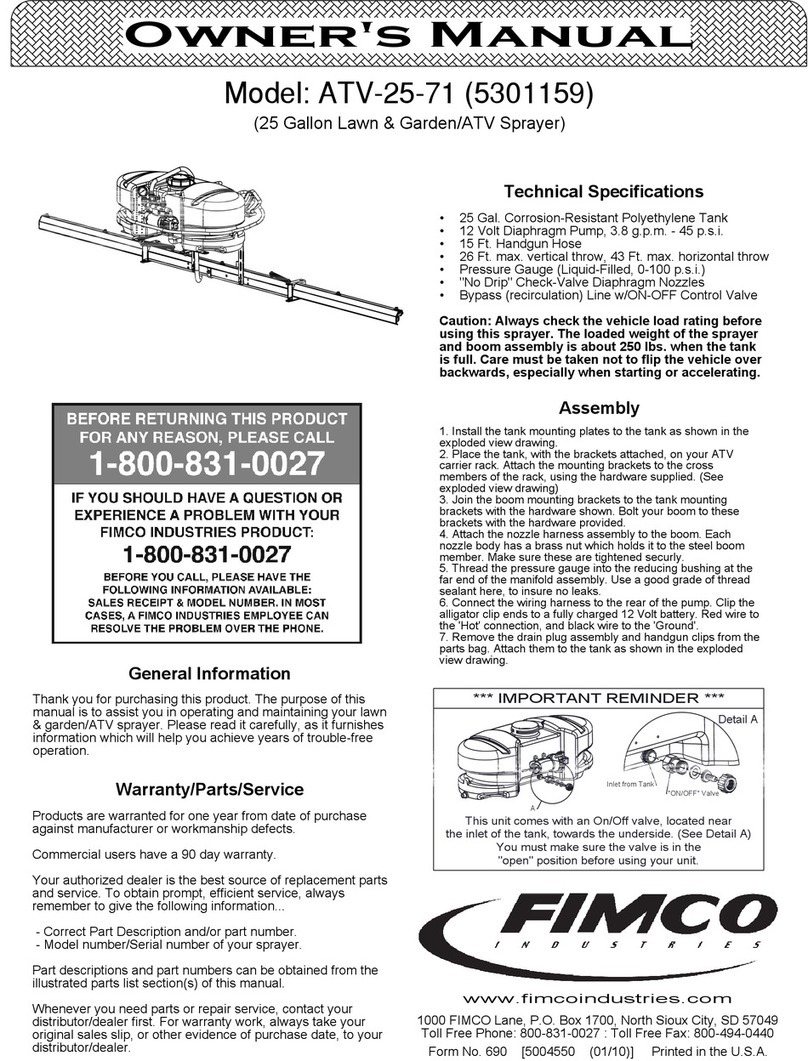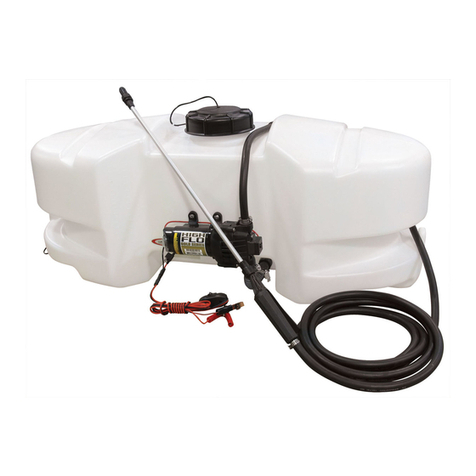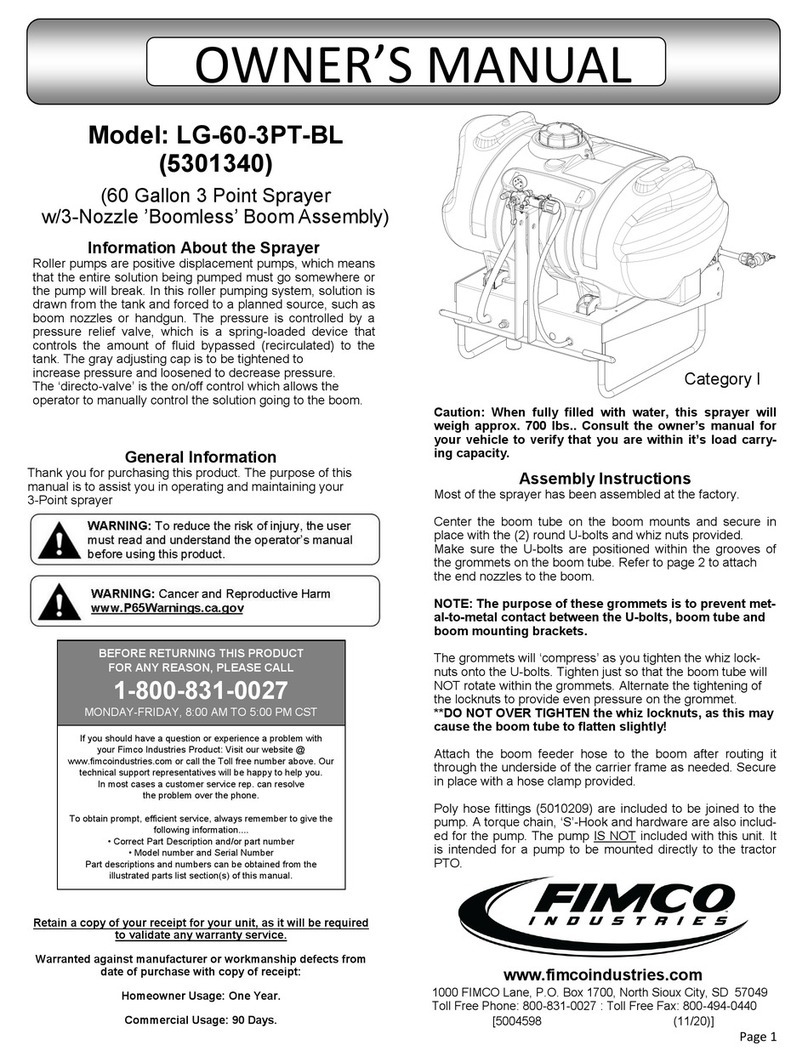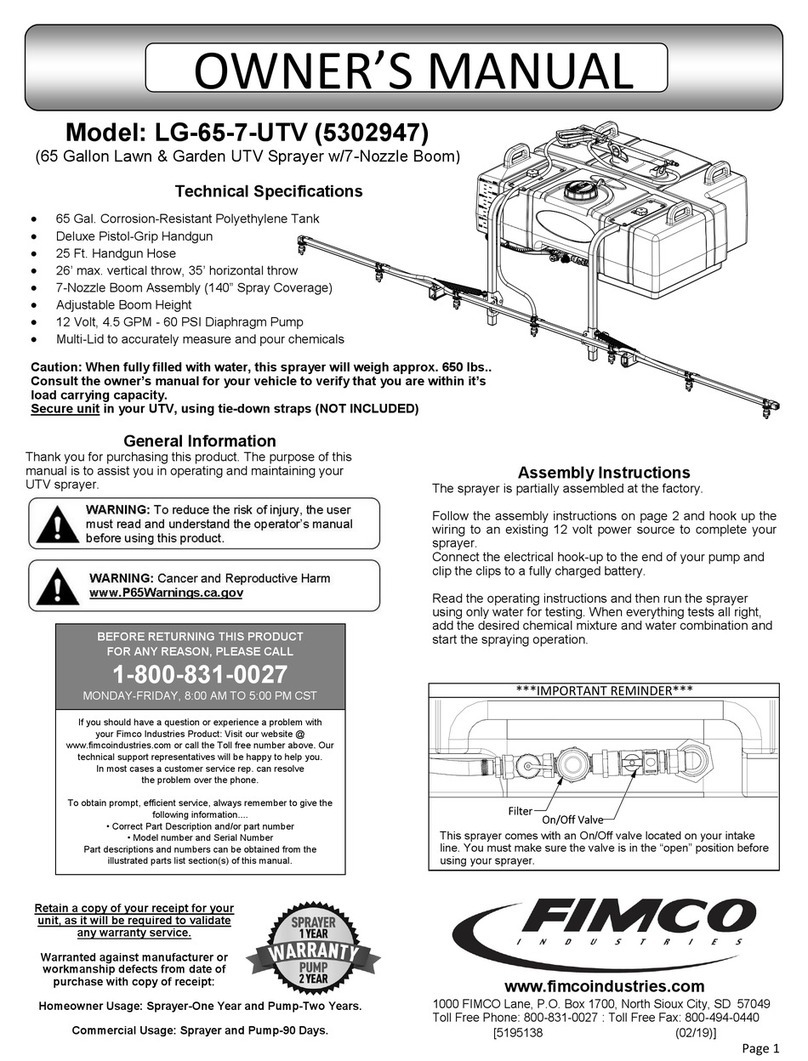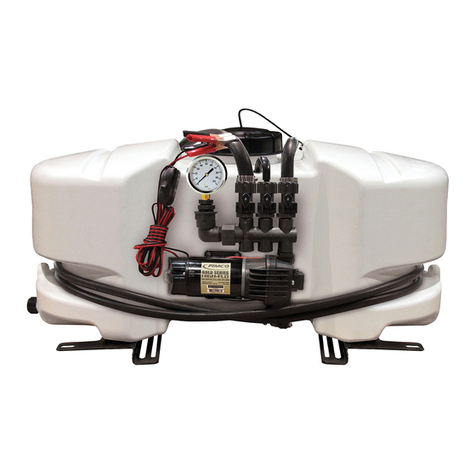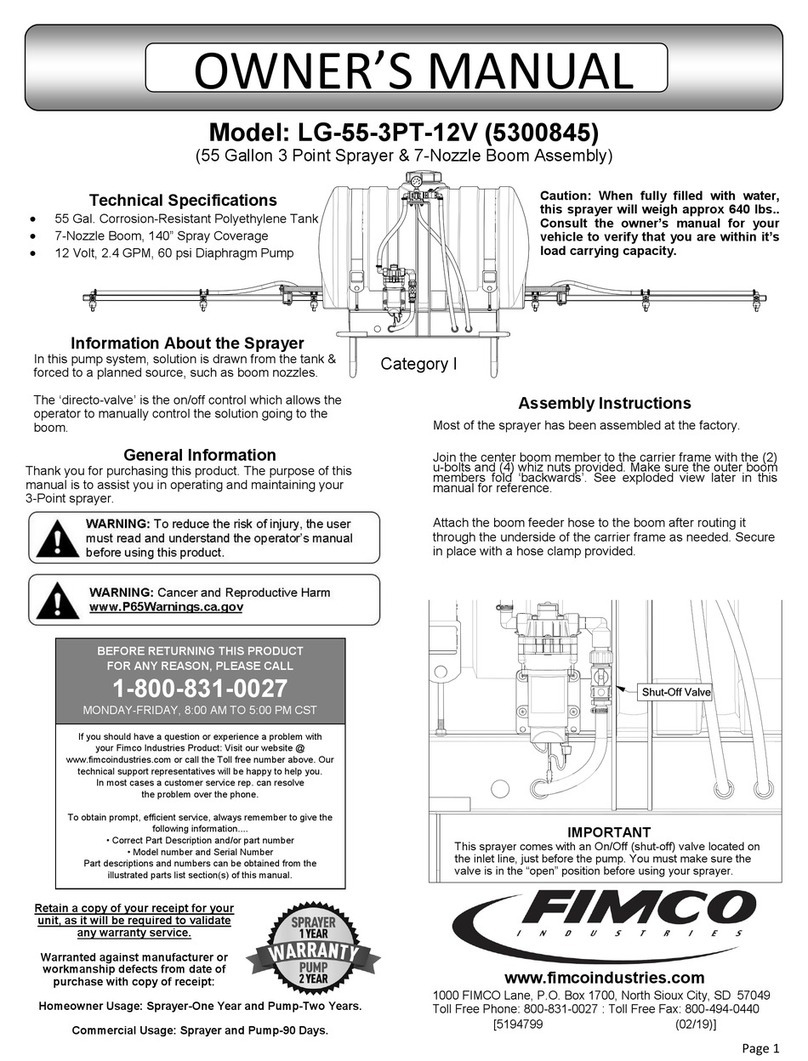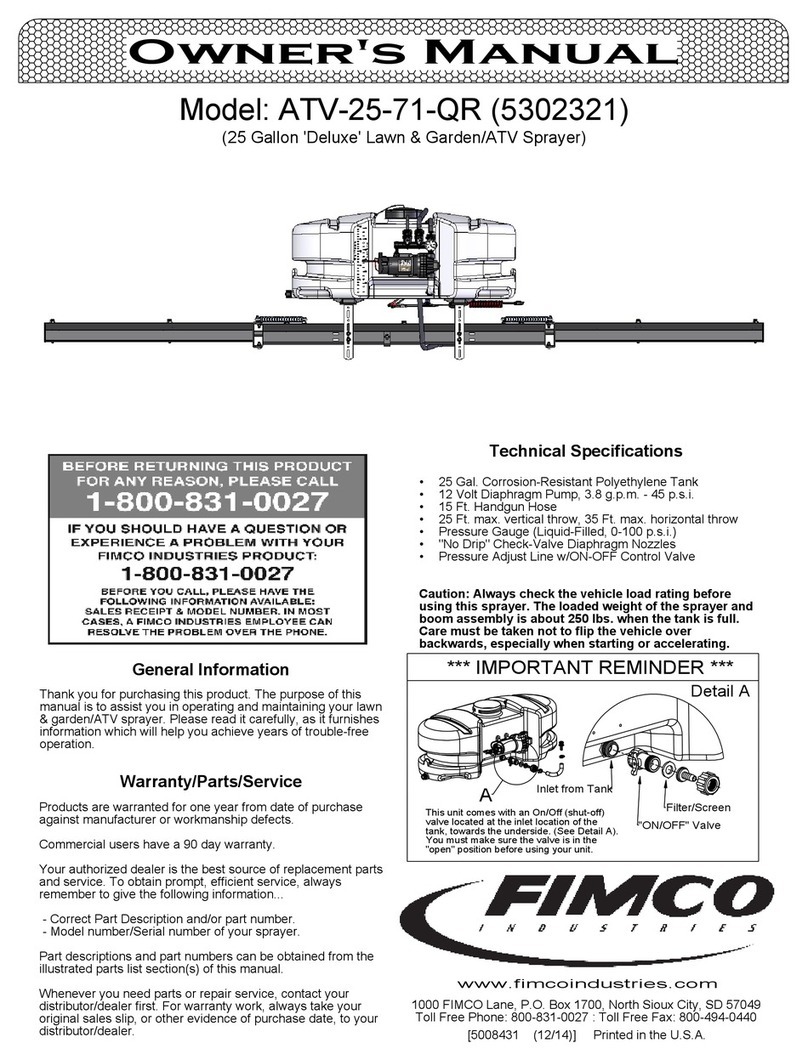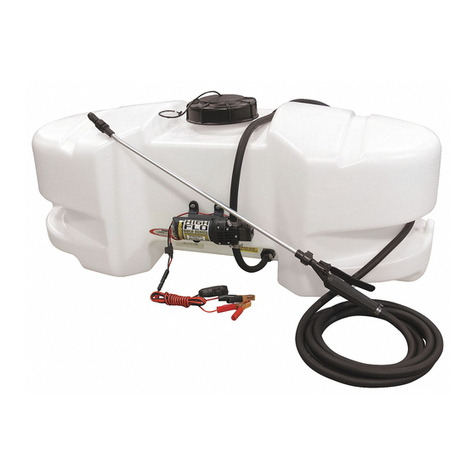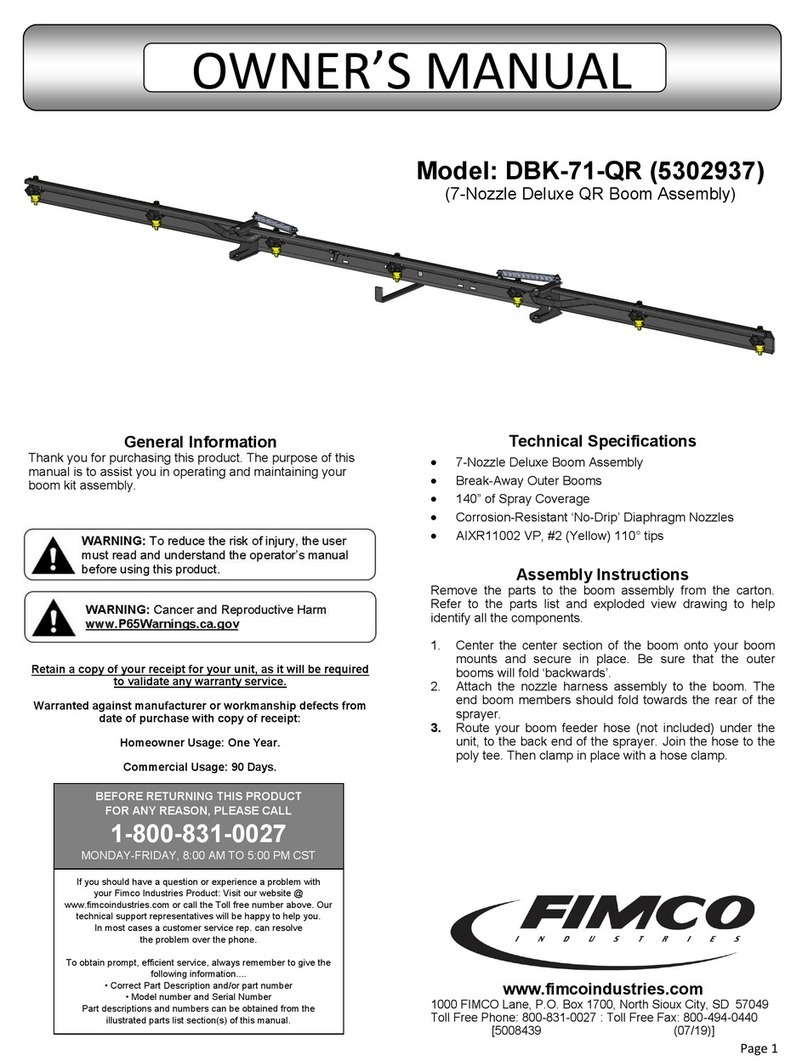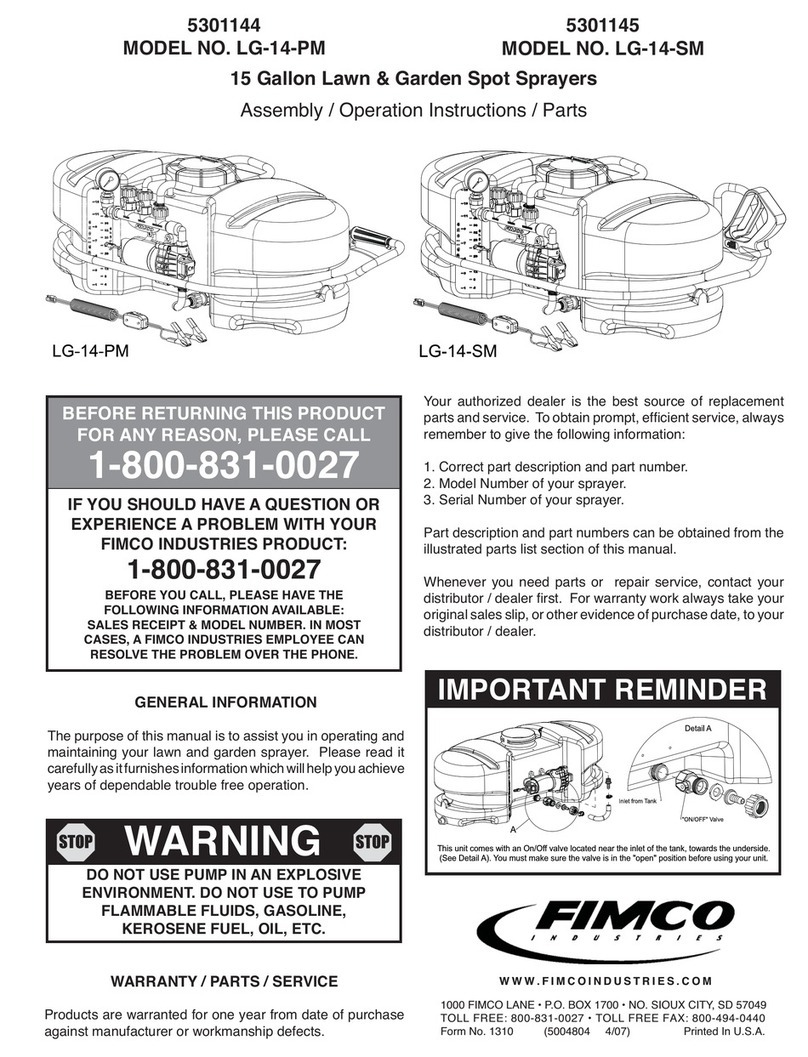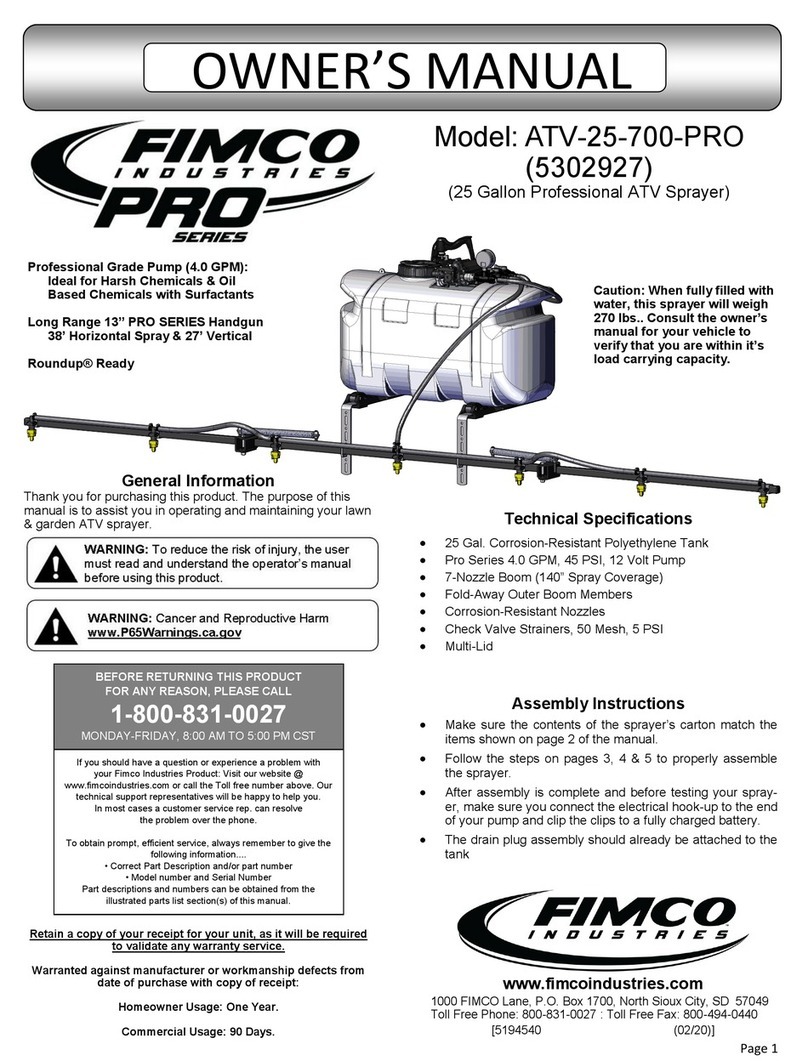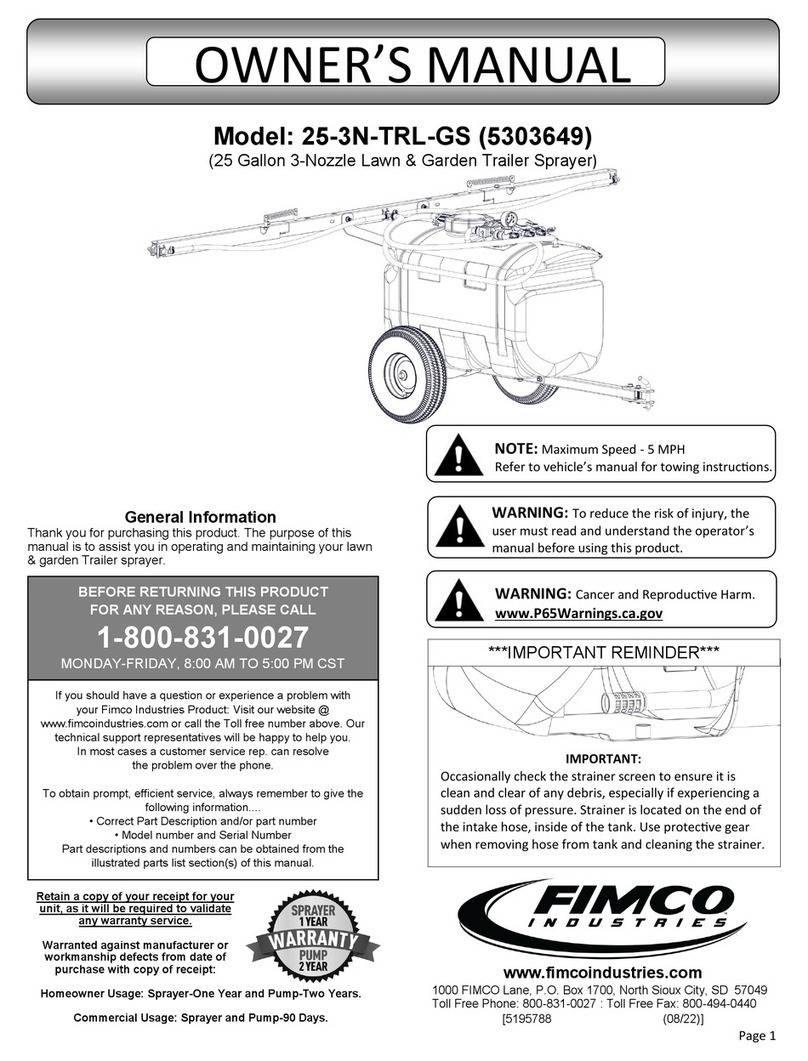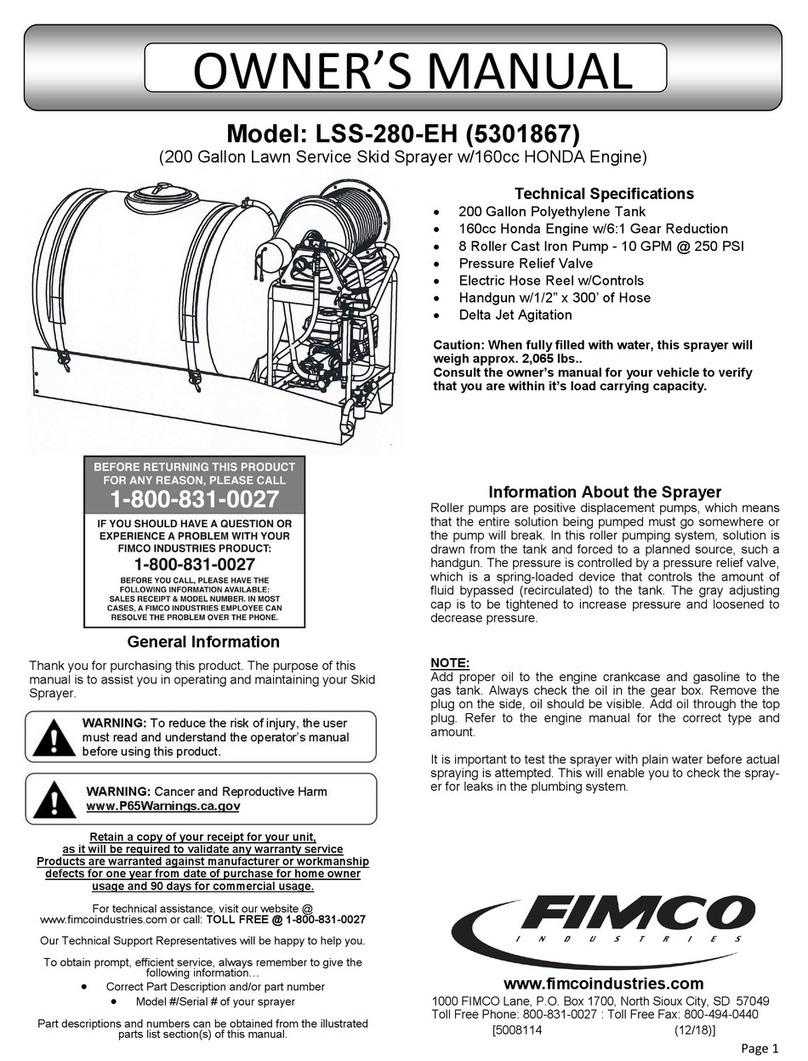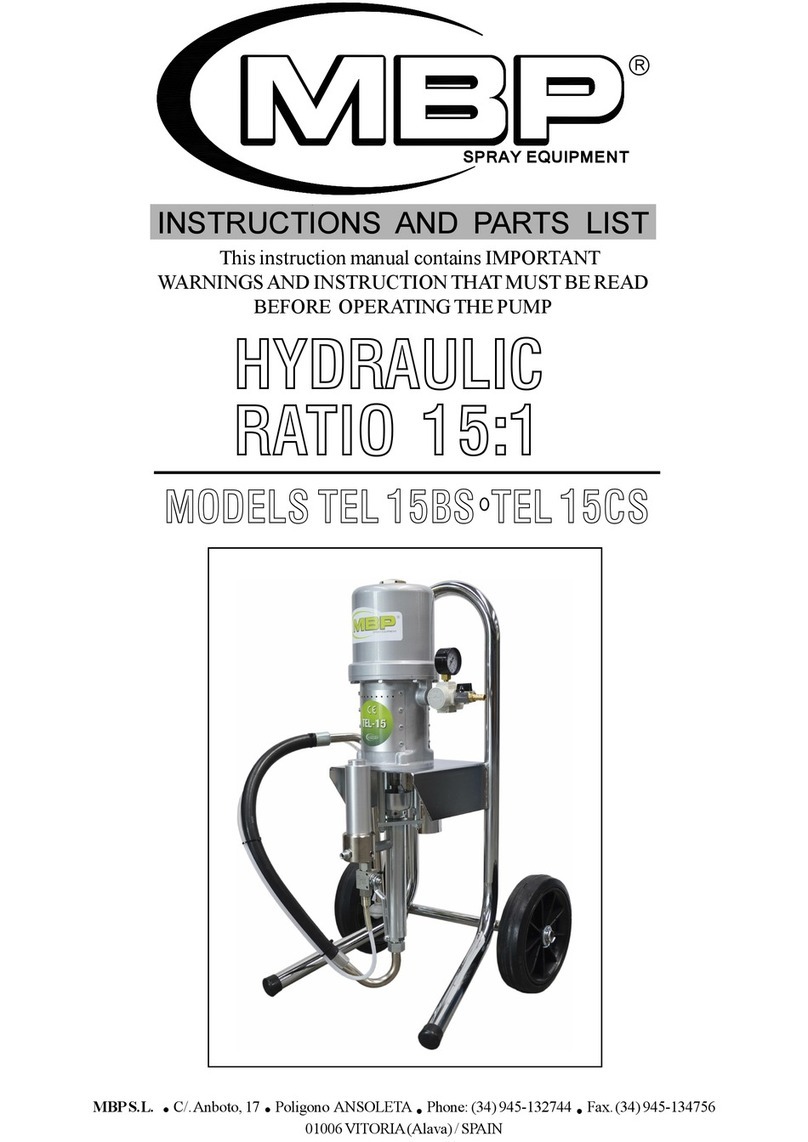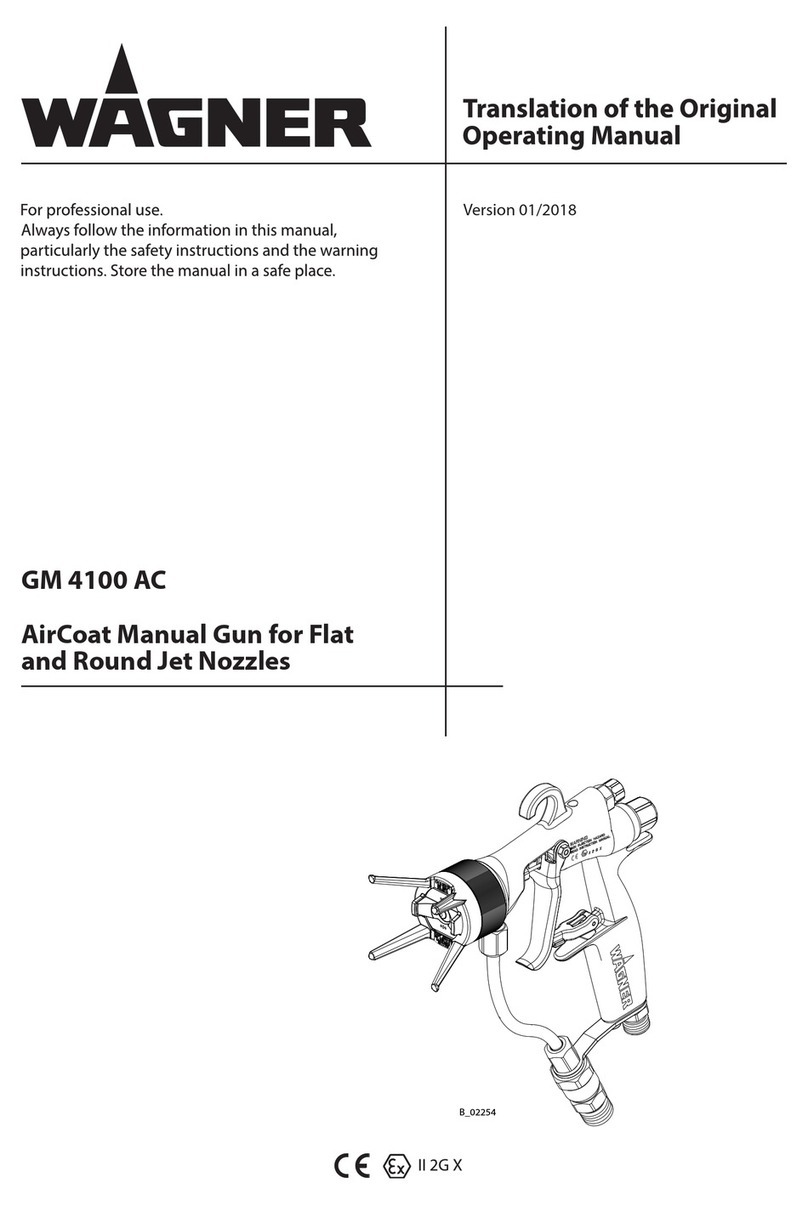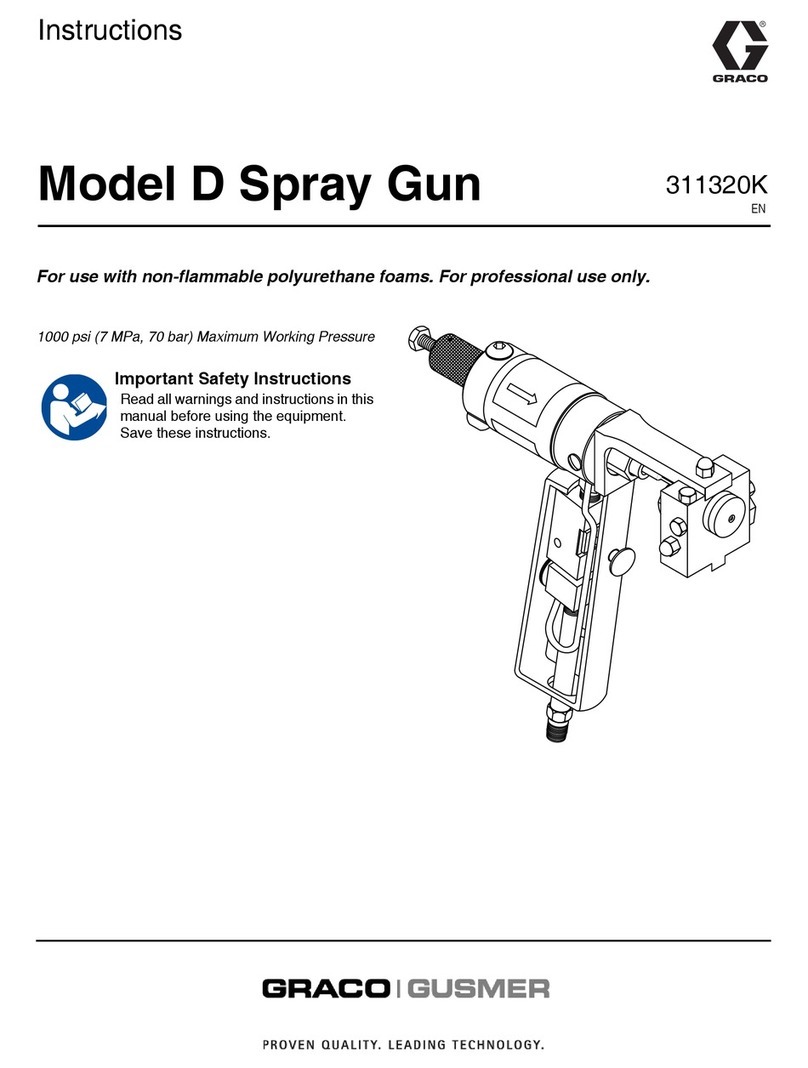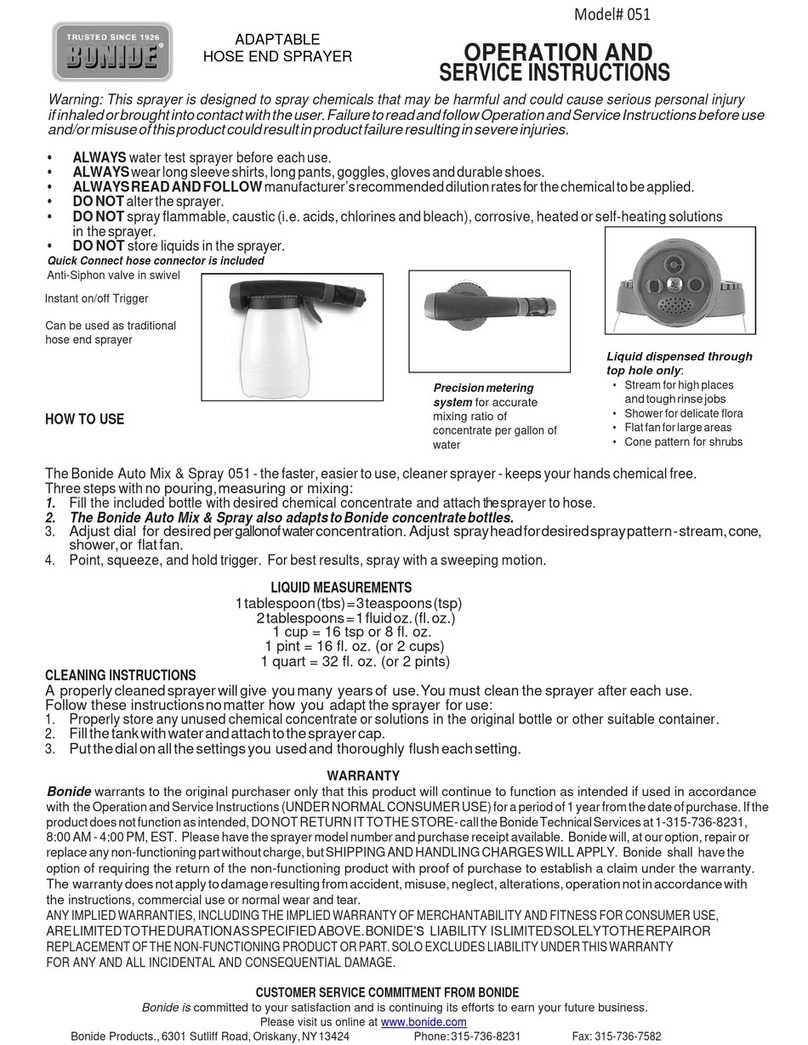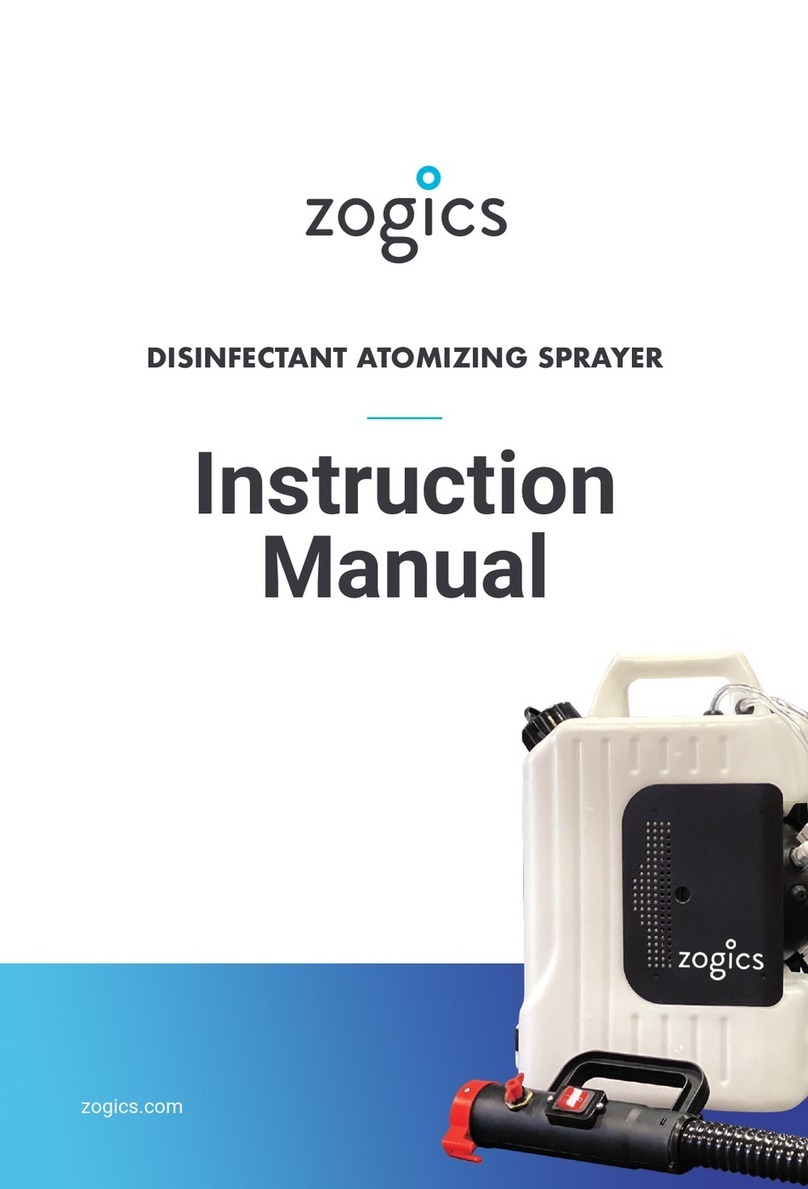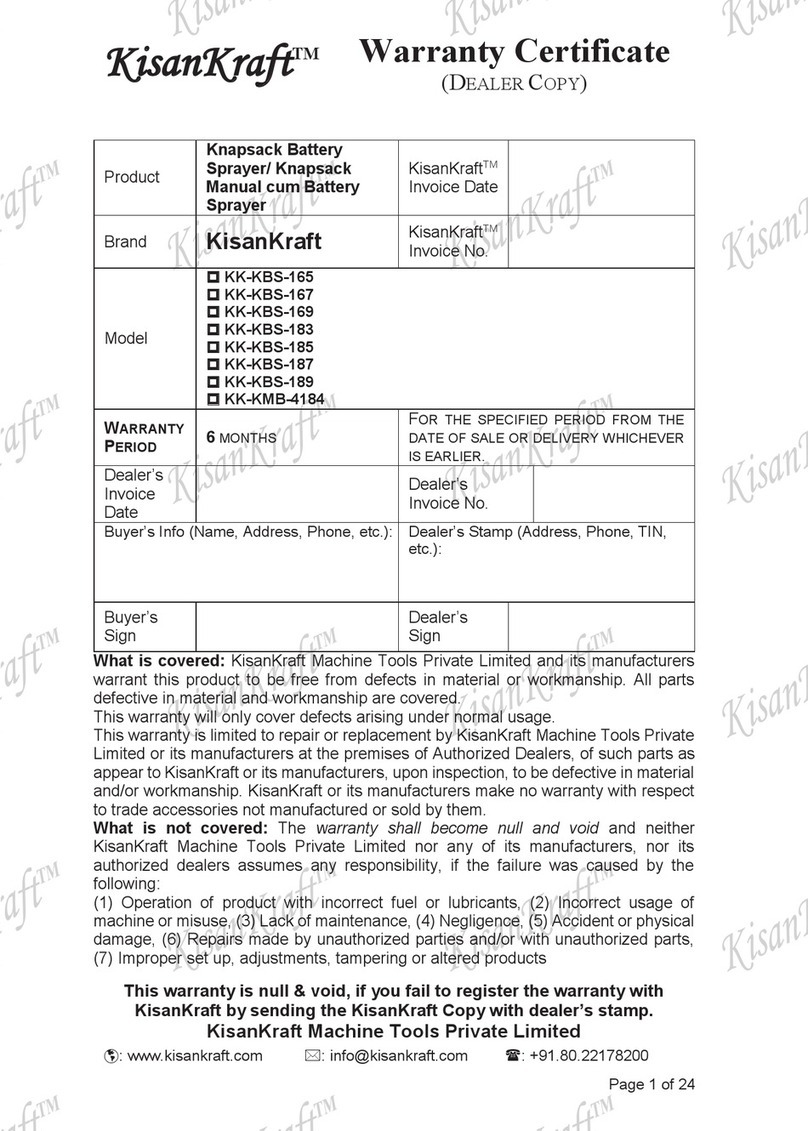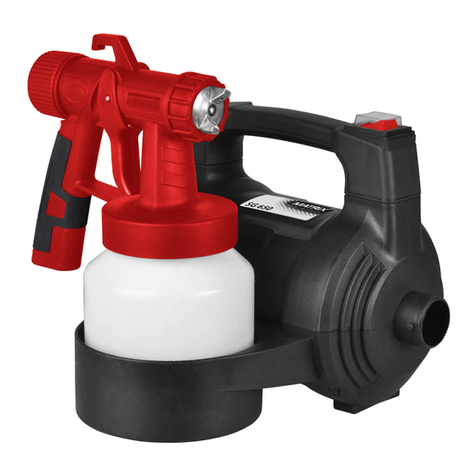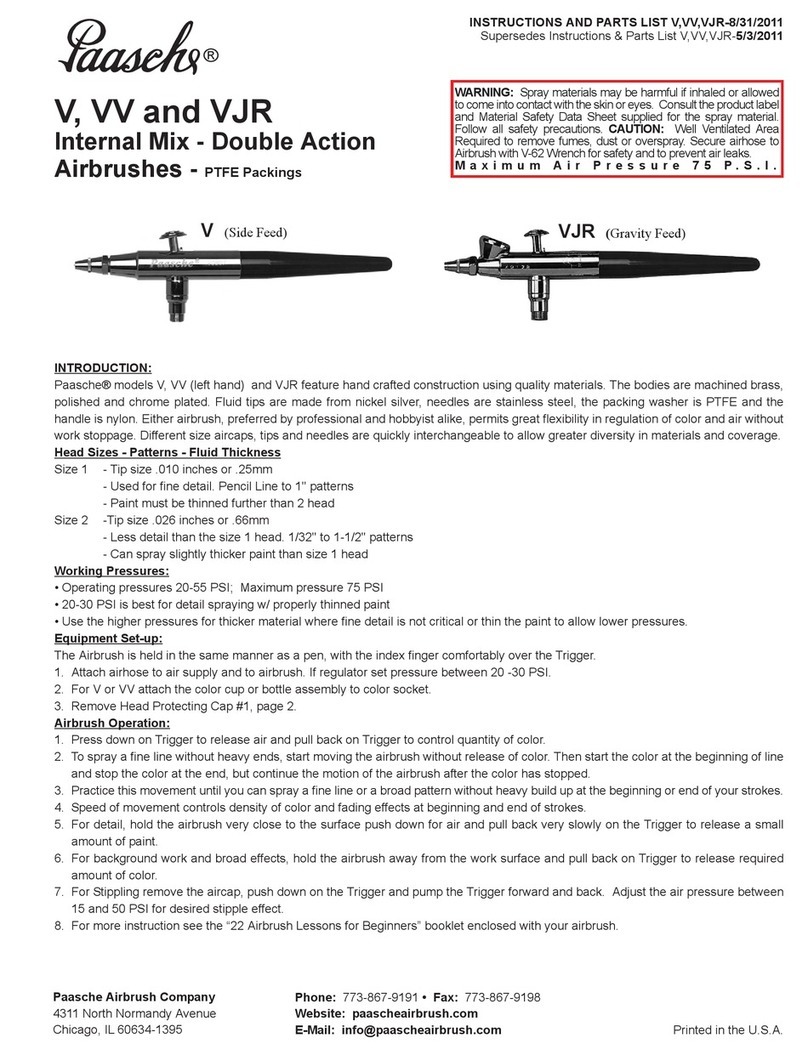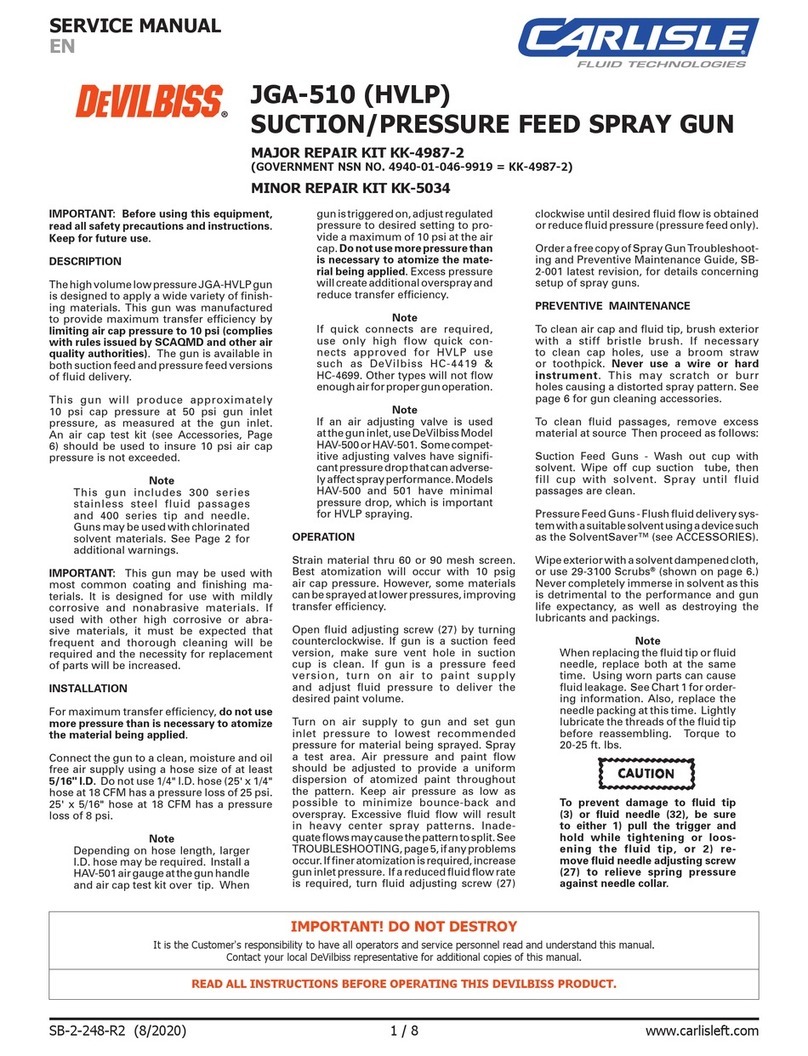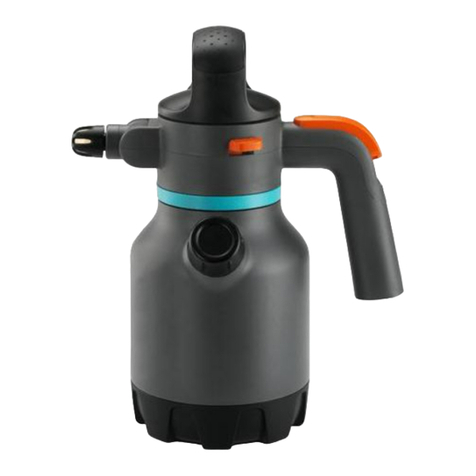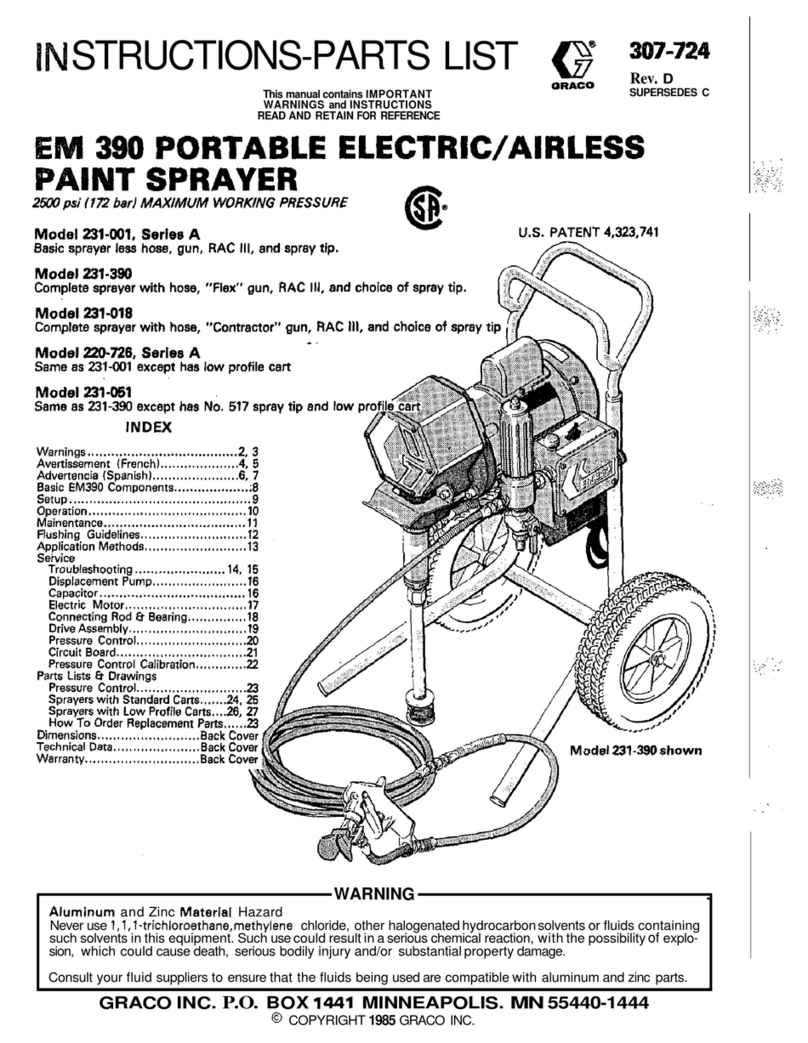Page 6
IMPORTANT: Remove tank lid and be sure the tank is clean and free of any foreign material. Rinse tank out of any tank
residue before lling with water to test.
Tesng the Sprayer
NOTE:
It is VERY important to test this sprayer with plain water before actual spraying is aempted. This will enable you to check the
sprayer for leaks without the possibility of losing any expensive chemicals.
Fill the tank about 1/2 full with plain water and drive to the starng place for spraying.
When you are ready to spray, turn the boom valve to the “on” posion (Detail A).
This will start soluon spraying from the ps of the boom. The pressure will de-
crease slightly when the boom is spraying.
Adjust the pressure by turning the “ON/OFF” valve lever on the Press. Adj. (bypass)
valve (Detail B). Make sure your paern is sucient. You may down-pressure the
system by ‘bypassing’ soluon back into the tank. This is achieved by opening the
Press. Adj. (bypass) valve. Regulang pressure is done in this manner.
Read the operang instrucons and inially begin spraying by closing the ‘Pressure
Adjust’ valve and opening the boom line valve (Detail A). This will enable the air in
the line to be eliminated (purged) through all the ps, while building pressure.
When everything tests all right (no leaks and good pressure), add the desired
chemicals to the mixture and water combinaon and start your spraying operaon.
Adjust the pressure and spray as you did in the tesng procedure.
Condions of weather and terrain must be considered when seng the sprayer.
Do not spray on windy days. Protecve clothing must be worn in some cases.
Be sure to read the chemical label(s) before applicaon!
Operaon
The pumping system draws soluon from the tank, through the strainer and to the
pump. The pump forces the soluon under pressure to the handgun or boom
nozzles.
Fill the tank part way with water and then add the desired amount of chemical to
be sprayed. Finish lling tank to proper level.
Only ll the tank with what you’re going to spray in a day, never leave chemicals
sit in tank.
Connect the lead wire to a fully charged 12 volt baery. You may use
either a stand-alone baery or the baery on your towing vehicle. Connect to the
posive (red) terminal rst, then connect to the negave (black)
terminal. Then connect the end of the lead wire to the end of the pump. When
disconnecng, disconnect the end of the pump wire from the lead wire, then dis-
connect the negave (black) connecon and nally the posive (red) connecon.
The lead wire has an On/O switch to acvate the pump. “-” is on and “O” is o.
Turn the pump on by depressing the “-” side of the rocker switch. The pump is
equipped with a pressure switch that is pre-set at the factory to shut the pump o
when all discharges are closed.
The pump will turn back on when one of the following acons occurs:
Handgun lever is squeezed to spray the handgun.
Boom valve is opened to broadcast spray with the boom.
Bypass valve is opened to re-circulate soluon back into the tank.
When spraying with either the boom or the handgun, pressure may be reduced by slowly opening the Press. Adj. (bypass) valve
unl desired pressure is achieved. Opening the valve decreases pressure, closing the valve increases pressure. When spraying with
the boom, the proper method to set the pressure is to open the boom valve completely and if a lower pressure is desired, then
slowly open the bypass valve unl that pressure is obtained.
For the safest and most ecient chemical applicaon, you will need to calibrate your sprayer using the p and speed charts. Once
you have determined the proper speed and pressure sengs, you will need to consult your chemical label for the amount of
chemical to be added to the tank. Read the enre label. Use only according to label direcons.
Manifold Valves CLOSED
Detail A
Detail B

